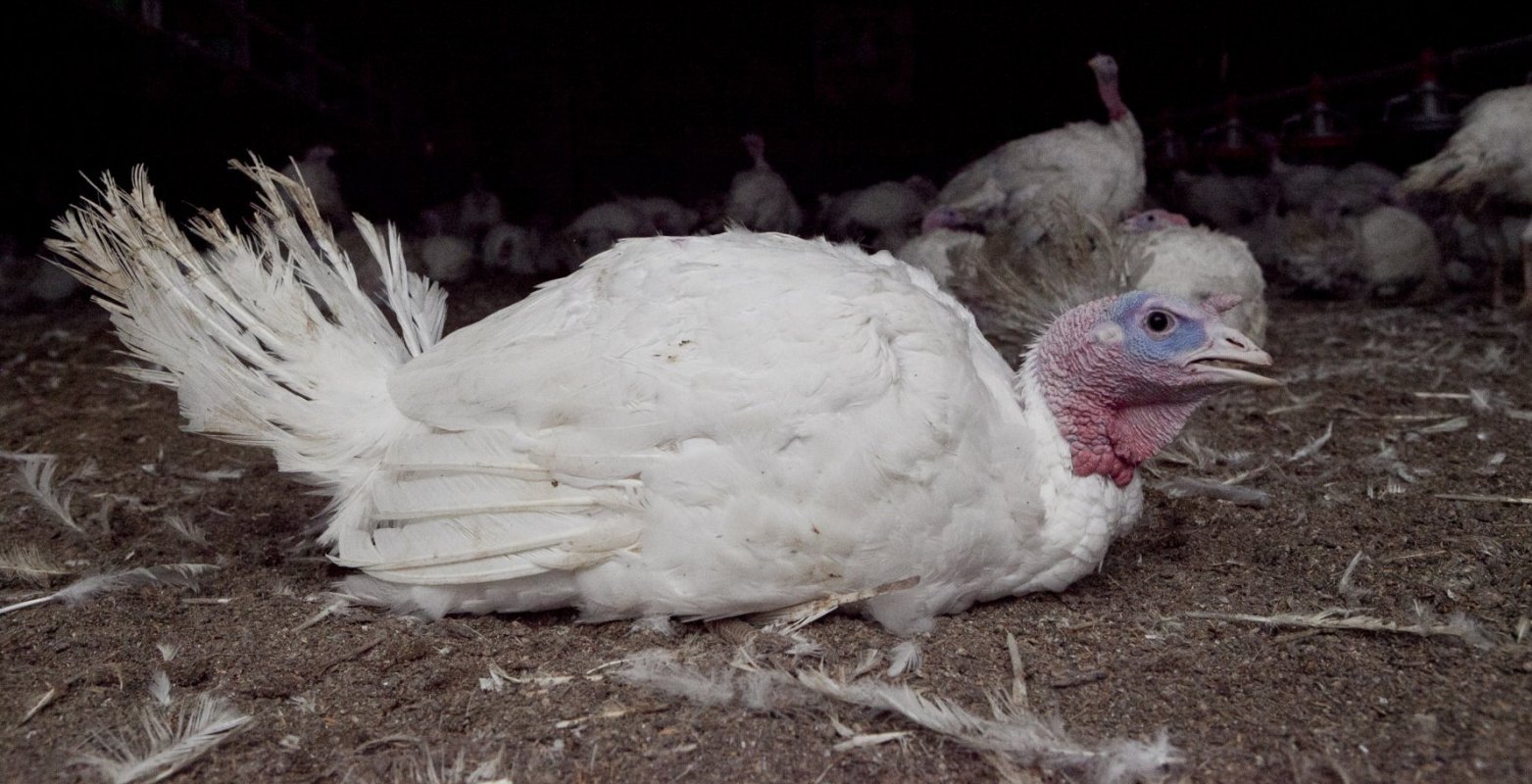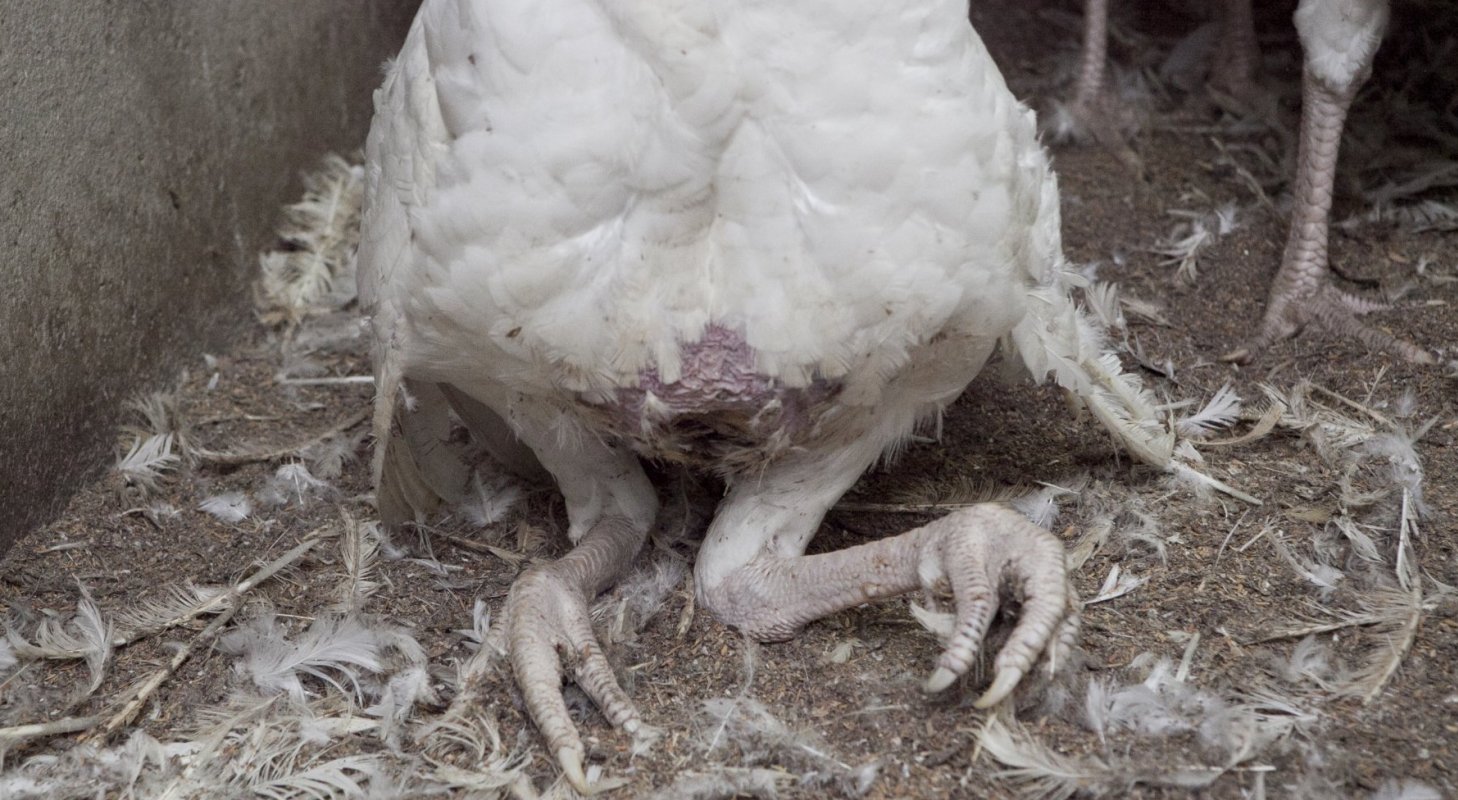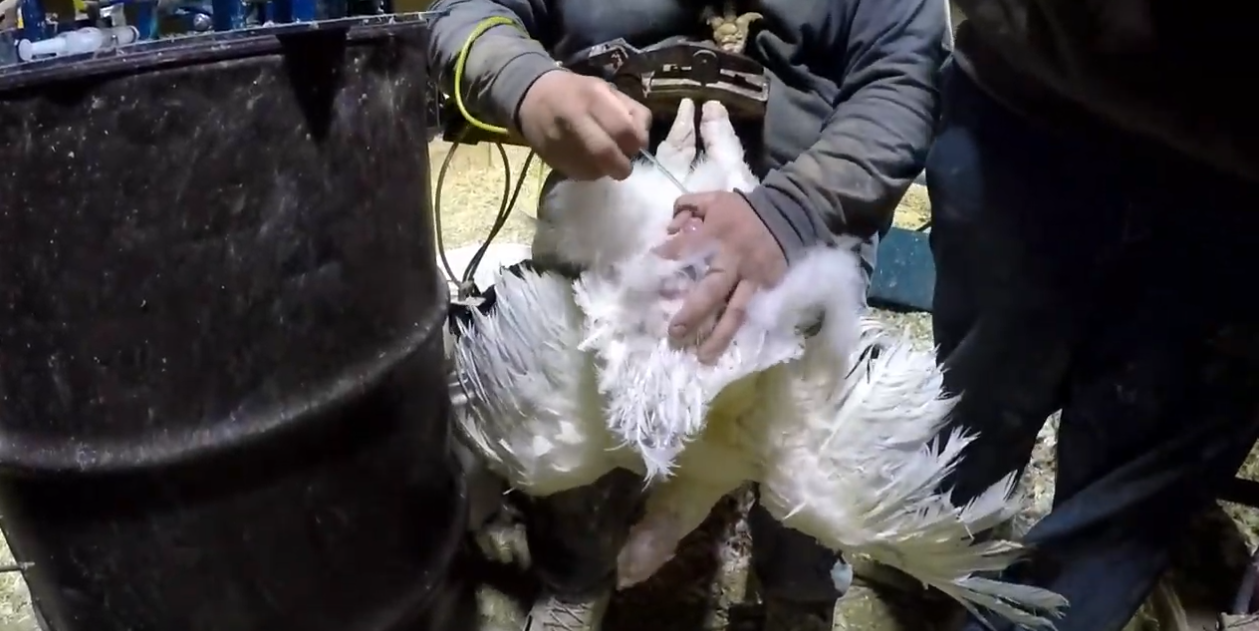Breeding
Baiada and Ingham's, the two largest turkey producers in Australia, import their breeder turkey eggs from overseas. Due to selective breeding, which often causes leg and joint issues in turkeys, breeder flocks are fed a restricted diet to control their weight. This means breeder birds are left chronically hungry.

Turkey breeder hens reach sexual maturity and start laying eggs at around seven-months-old, laying approximately 105 eggs in a 28-week time frame. After this, they are considered no longer profitable and are slaughtered. The natural life span of a turkey is ten years, but breeding hens are killed at one-year-old.
Breeder flocks live in the same conditions as those raised for consumption. This means they experience the same health issues in the environment they are raised in, however, breeder turkeys' health issues are exacerbated as they are housed in these conditions much longer.

As a result of being bred to grow to unnaturally large sizes, turkeys killed for commercial use in Australia cannot breed naturally. Artificial insemination is standard practice in the turkey farming industry.
Semen collection from turkey toms
Semen is collected from turkey toms using the 'abdominal massage method' which is also referred to as 'milking'. 'The erection of the copulatory organ and the ejaculation reflex in turkeys occurs simultaneously in response to massage' (Mohan, Sharma, Kolluri, Dhama, 2018). Toms are restrained, unable to move, and the farmer massages the turkey's cloaca until they ejaculate.
Artificial insemination of hens
The process of artificially inseminating hens is performed by applying pressure to the hen's abdomen to access her vaginal orifice through the cloaca. This procedure is referred to as 'cracking', 'venting' or 'everting' the hen. Simultaneously, semen is injected into her using a straw, syringe or plastic tube.
 A hen being artificially inseminated.
A hen being artificially inseminated.
The artificial insemination process is repeated weekly. The production period of hens is typically from 18-23 weeks of age until 60-65 weeks of age. Once turkeys' productivity slows, they are no longer considered economically viable and are slaughtered.
Bestiality is considered a crime under the Crimes Act 1958, however for the purpose of scientific testing and agriculture these laws do not apply.
This is a video from an American turkey breeding farm. Although this is not in Australia, many of the practices are the same.


